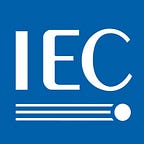Every time a popular mobile brand releases a new phones, millions of consumers purchase it, even though they already own a device that works perfectly well. When a television set breaks down, we replace it with a new one, rather take it for repair. Products are made, used and discarded, based on a linear economic model
In the long term, this economic model is clearly not sustainable. The population of the world is expected to reach 9 billion by 2050, exacerbating the demand for scarce resources. Landfills are filling up rapidly, with municipal waste generation expected to reach 2,2 billion tonnes by 2025, compared with 1,3 billion tonnes in 2012, according to the World Bank.
That is why the concept of a circular economy is gaining traction. In simple terms, it is a reconsideration of how resources are managed and how waste is perceived. It affects the entire lifecycle of a product, from initial design and the materials employed to the use of the product, its repair, reuse and the transformation of its parts into a new product.
The Ellen MacArthur Foundation, a leading advocate of the circular economy, describes it as:
…a systemic approach to the design of processes, products/services and business models, enabling sustainable economic growth by managing resources more effectively as a result of making the flow of materials more circular and reducing and ultimately eliminating waste.
A circular economy is based on the effective functioning of existing (circular) mechanisms such as extending product lifetime, reuse, repair, refurbishment, remanufacture and recycling.
According to technology expert Solange Blaszkowski who chairs the IEC Advisory Committee on Environmental Aspects (ACEA), “circular economies are about resources and how to keep them in use”. The circular economy approach reassesses how resources are managed and how waste is perceived throughout the entire lifecycle of a product from its design to its use, repair, reuse, remanufacture and, finally, its transformation into parts for new products.
Material efficiency is an essential part of the circular economy. It consists of the conservation of materials by making products more durable and repairable as well as facilitates the reuse and recycling at the end of the product life. For Andreas Schneider, a member of ACEA, “material efficiency is trying to be responsible with materials, the building blocks of products and services. These materials need to remain available, not only for now or for one use, but continuously through recycling and reuse”.
A recent IEC ACEA survey demonstrated that certain aspects of the circular economy are directly relevant to the work of many IEC committees. Industry is also taking interest in issues such as product design optimization, refurbishment and recyclability. To better understand the impact on industry, e-tech spoke with several IEC experts who are involved in issues related to the circular economy.
Industry is taking note
Many businesses have understood the importance of the circular economy and taken steps to begin integrating its concepts into their business practices. Andre Nieuwland, who works for a leading health technology company and presented at a recent ACEA workshop on the circular economy held during the IEC General Meeting 2019, remarks, “our company has some quite ambitious goals for 2020 to become more circular-oriented and have more revenues from circular types of services and products.”
However, moving towards a circular economy is not an easy endeavour. It requires a deep reflection on how to implement circularity into business practices. According to Blaszkowski “when thinking about the circular economy, a lot of people think in terms of incremental improvements. But to really achieve a circular economy, we need to put in place a totally new way of thinking”.
Christian Dworak, who is involved in the circular economy at the European level, concurs. “The circular economy means rethinking the whole strategy of a company, including sales, marketing and finance. This is a major challenge”.
For example, companies need to refocus their business from selling goods to providing services. According to Nieuwland, “our current business system is still quite heavily biased towards selling goods rather than maintaining them. If you look at the biggest challenge for our industry to become more circular, it is that we must change our business models”.
Standards can help
Standards can serve as an important tool to promote the circular economy. According to Blaszkowski, “if a company wants to make its business more circular, it will need to reach out to supply chains, users and regulators. For businesses operating internationally, it may also mean reaching out to the value chain spread throughout the whole world. Standards play a very important role in that they create one terminology and the same understanding about what today are seen as difficult concepts in the circular economy”.
Standards can, for example, provide methods to measure the durability and upgradeability of a product. They can also specify means to assess the ease with which a product can be repaired and recycled, and to ensure the quality of the recycled materials. They can also provide means to assess the degree of circularity of a business, product and/or service
Standards can help with issues related to international trade and the legal issues associated with the shipment of products across national borders. Manufacturers are confronted with different rules and regulations where it is not always possible to use refurbished components. According to Nieuwland, “we need to find a solution in standardization so that it is possible to sell refurbished systems across borders. It is not waste that we are producing, but rather it is waste that we are trying to prevent by becoming more circular and reusing parts in a smart and efficient way”.
For Dworak, “international standards can help give manufacturers the confidence and security that what they do will be recognized worldwide”.
